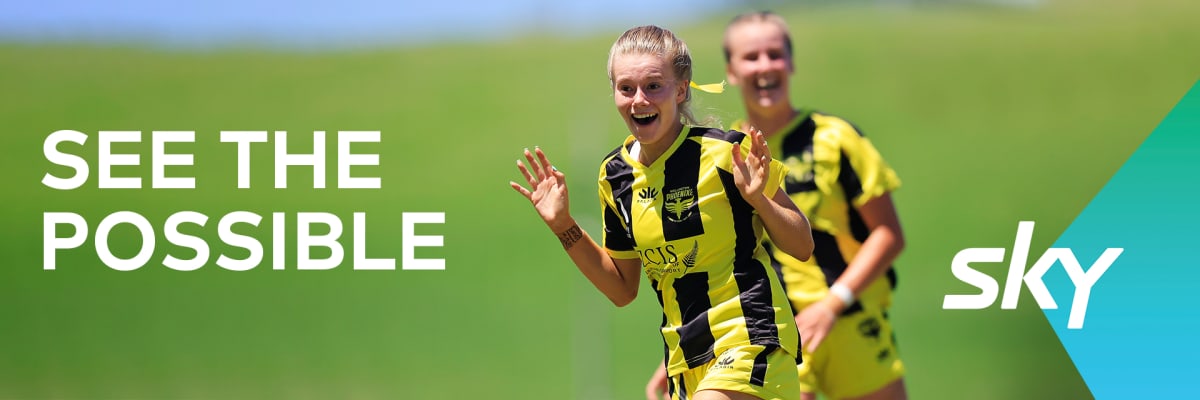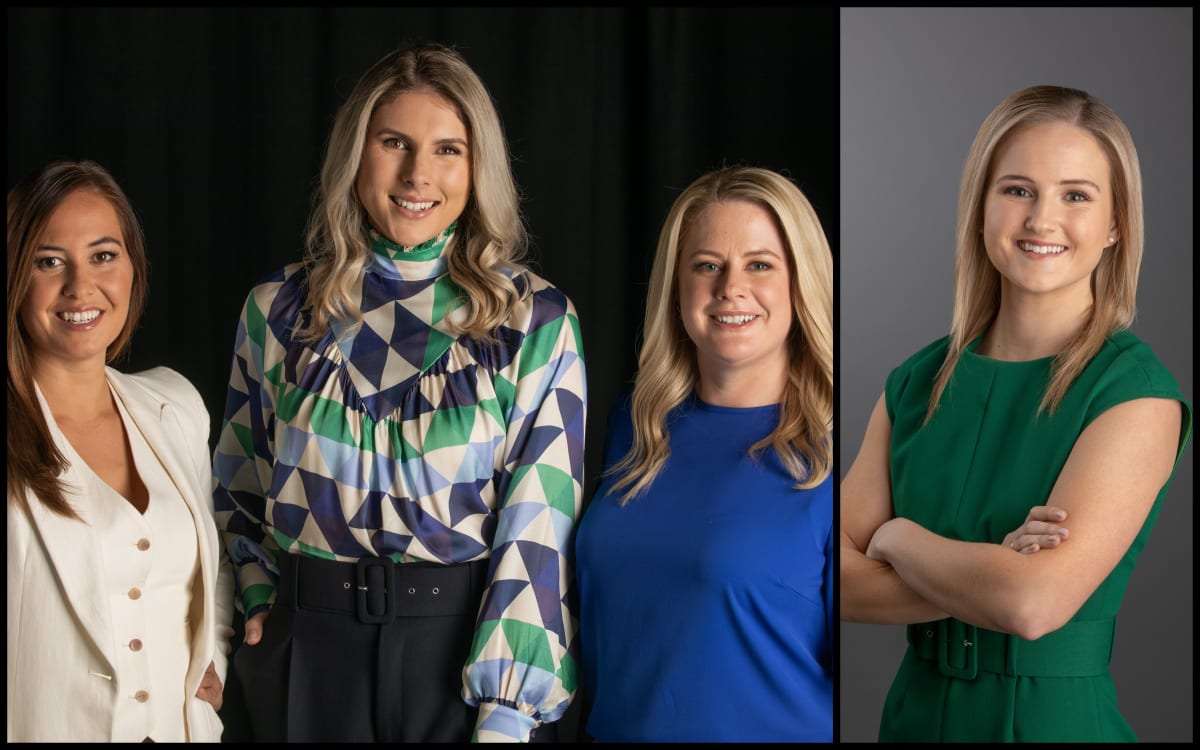
An upsurge in Kiwi viewers watching female sport backs up Sky's new commitment, See the Possible, to do more to highlight and support Kiwi women in sport.
New Zealanders, you’ve proved yourselves to be myth-busters.
That tired old line, ‘No one watches women's sport’? You just blew it right out of the water. And Sky has the numbers to confirm it.
In one week last month, at the height of the Cricket World Cup here in New Zealand, women’s sport accounted for 67 percent of the total viewing hours in Sky Sport’s top 50 live events, screened on the Sky Box and Sky Go.
And 14 of the top 20 rating slots on the Sky Box were women’s sport – which was also just under 40 percent of all the top 50 streams on Sky Sport Now.
That, Sky chief executive Sophie Moloney says, is hundreds of thousands of viewer hours of women’s cricket, rugby, netball, combat sport, football, league, golf, squash and the AFLW.
Some of those hours were spent watching landmark events for women in sport: The ICC Women’s Cricket World Cup, the inaugural Super Rugby Aupiki and netball’s ANZ Premiership, this year celebrating 25 years of elite netball in New Zealand. And there are more to come, like next year’s FIFA Women’s World Cup, to be played here for the first time.
It thrills Moloney to see these telling statistics, just as Sky launches ‘See the Possible’ – a commitment, rather than a campaign, to do even more to highlight and support women’s sport, both on the screen and behind it.
The idea is to ensure young women “can see what they can be” – whether it’s playing or working in sport, and the pathways to get there.
Moloney tells a charming story, from before she became head of Sky, of taking her two sons to watch the Black Caps play in her hometown of Nelson.
“It was back in 2019 and we took our boys along to Saxton Oval to meet the players. They got their caps signed and had a lovely time,” she says. “The next morning, I could hear them watching cricket, whooping and commentating on the game.
“And in my prejudice, I assumed they were watching men play. But it was the women’s Big Bash league.
“I was super-struck in that moment that that’s what it’s all about. As long as we do this side-by-side - broadcasting women’s sport, and giving them no less treatment than the men, and celebrating it -then the audience is there. It’s vitally important we don’t disrupt that.”

The See the Possible ethos grew out of a long conversation, Moloney says – through lockdowns and Covid-impacted sports seasons – around Sky’s role to “celebrate our wāhine toa”.
“In reality, we’ve been playing our role as a broadcaster of women’s sport for a long time, but I don’t think we’d necessarily put it into a frame that could then be readily talked about,” she says.
“This isn’t just about a campaign, it’s about an ongoing opportunity for Sky to play our role as a platform to showcase talent. But more importantly for me, I want it to be part of a broader ecosystem of like-minded people, like [Sport NZ CEO] Raelene Castle and [Women in Sport Aotearoa CEO] Rachel Froggatt to talk about how we can be intentional about this.
“Especially in a period where we have a phenomenal amount of women’s sport on our calendar. It's about an ongoing conversation - and this is just the start of it.”
Moloney has no doubt there’s demand to watch women playing sport. Sky Sport Now, the broadcaster’s standalone sports streaming app, covers more than 50 sports, and it didn’t surprise her that almost 40 percent of recent viewership was of women’s sport.
“It says that if it’s there, people want to consume it. The digital opportunity means different audiences being able to consume that sport, too,” she says.

Sky also wants to make women’s sport more accessible to audiences – without devaluing it. It will now give more thought to its free-to-air sports strategy, Moloney says.
“We’ve recommitted to free-to-air sport with partners, like we did with TVNZ for the Tokyo Olympics, and the State of Origin on Discovery NZ,” she says.
“And we’ve been very conscious of making a lot of sport content available on Prime - particularly White Ferns games during the Cricket World Cup. The Beijing Winter Olympics also had phenomenal viewership on Prime too.
“We will still partner with other broadcasters where it makes sense. But that doesn’t mean we want to put all women’s sport on free-to-air. It’s far too valuable.”
Moloney wants to see more in-depth stories about the women we see on the screens, and those working behind them. That means more interviews, shows and panel discussions around women in sport. And more women asking the questions and producing those shows.
In last year’s Olympic coverage, Sky had a four-woman presenting team on the ground in Tokyo - Storm Purvis, Rikki Swannell, Kirstie Stanway and Kristina Eddy. The broadcaster is committed to developing more female talent to commentate on rugby, netball, basketball and football this year.

Sky has built-up a steady stream of partnerships with female athletes, sports codes and organisations over the past few years - like the Black Ferns, and the Farah Palmer Cup, the Silver Ferns and ANZ Premiership, Basketball NZ and the new Tauihi Basketball Aotearoa women’s league, the Warriors Women and the White Sox.
And it continues its unique partnership with LockerRoom, providing a scholarship to help increase the number of females working in sports journalism and boosting the coverage of women in sport.
“It shocks me that only 15 percent of sports coverage in New Zealand is women’s sport,” Moloney says.
She’s also keen to further the discussion around women in sports leadership, and diversity and inclusion.
“I think it’s Sky’s role to help amplify the broader conversation. We need to make sure we all connect on this and ask ‘What does success mean?’ It’s great to have a campaign and emotionally draw people in, but what does it actually do? What’s the change we’re trying to create?” Moloney says.
“Now I’ve come up for a breath of oxygen after a really big year for Sky, we’re starting to get the results, and I’m really keen to spend a bit more time with relevant people to have this conversation.”
Moloney’s hope is that all platforms involved in women’s sport - like the media, Sport NZ and Women in Sport Aotearoa - can work together to become “so much more powerful”.
“It’s not just about the amazing high performance athletes; it’s about all of those stories around all women achieving in sport,” she says. “I’d love to have that conversation about how we amplify women’s sport across all platforms, in a way that joins up all the dots.
“We’re not going to let up on elevating wāhine on the screen and those behind it. We’re on the right path.”







